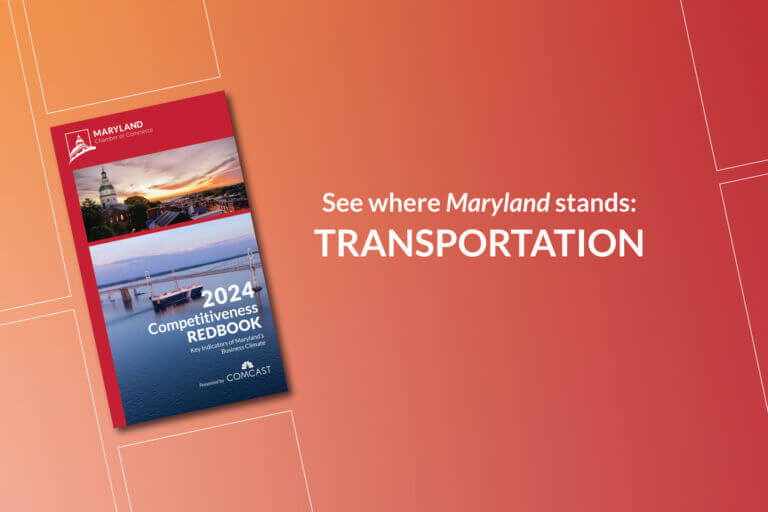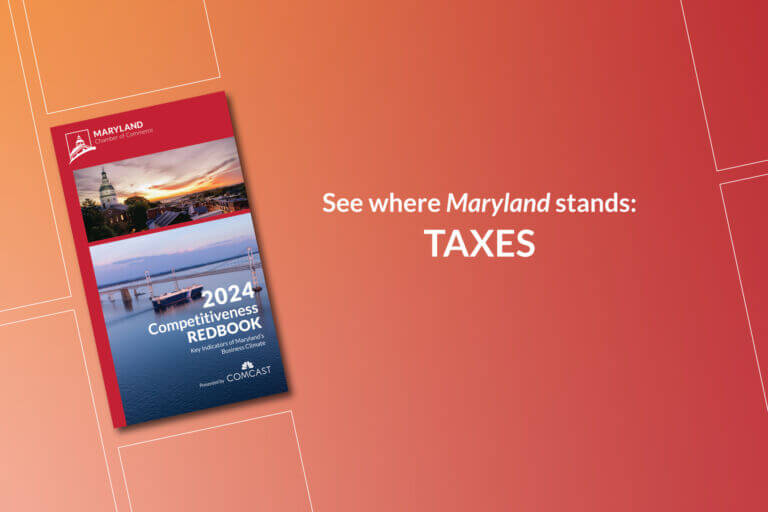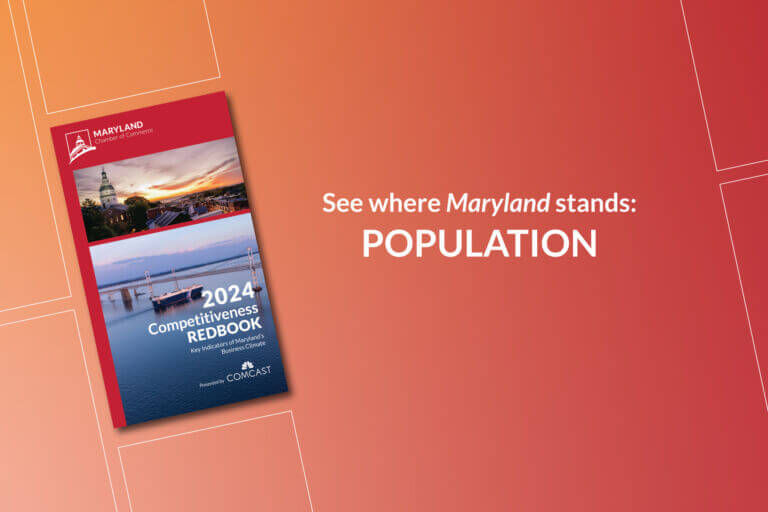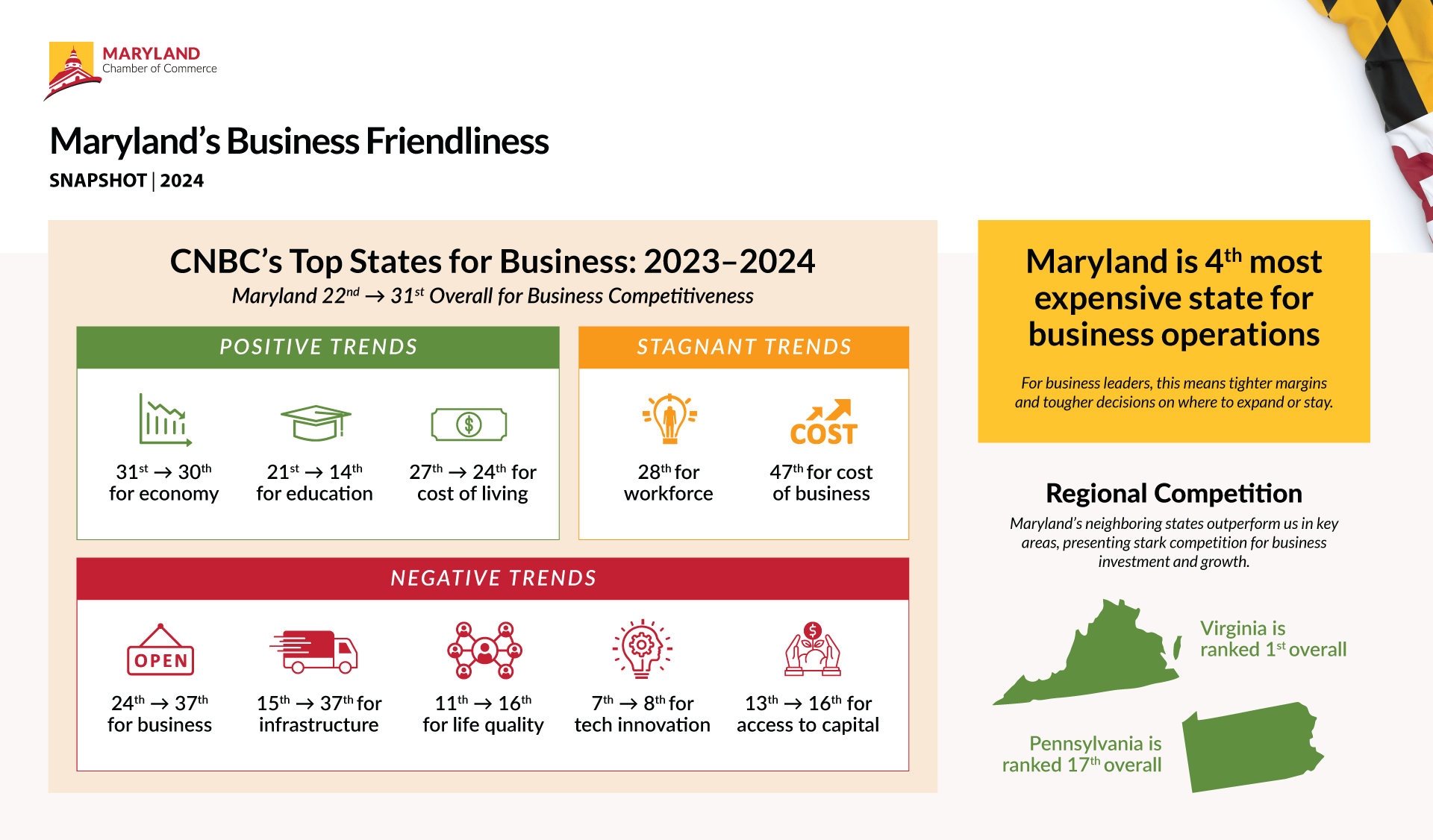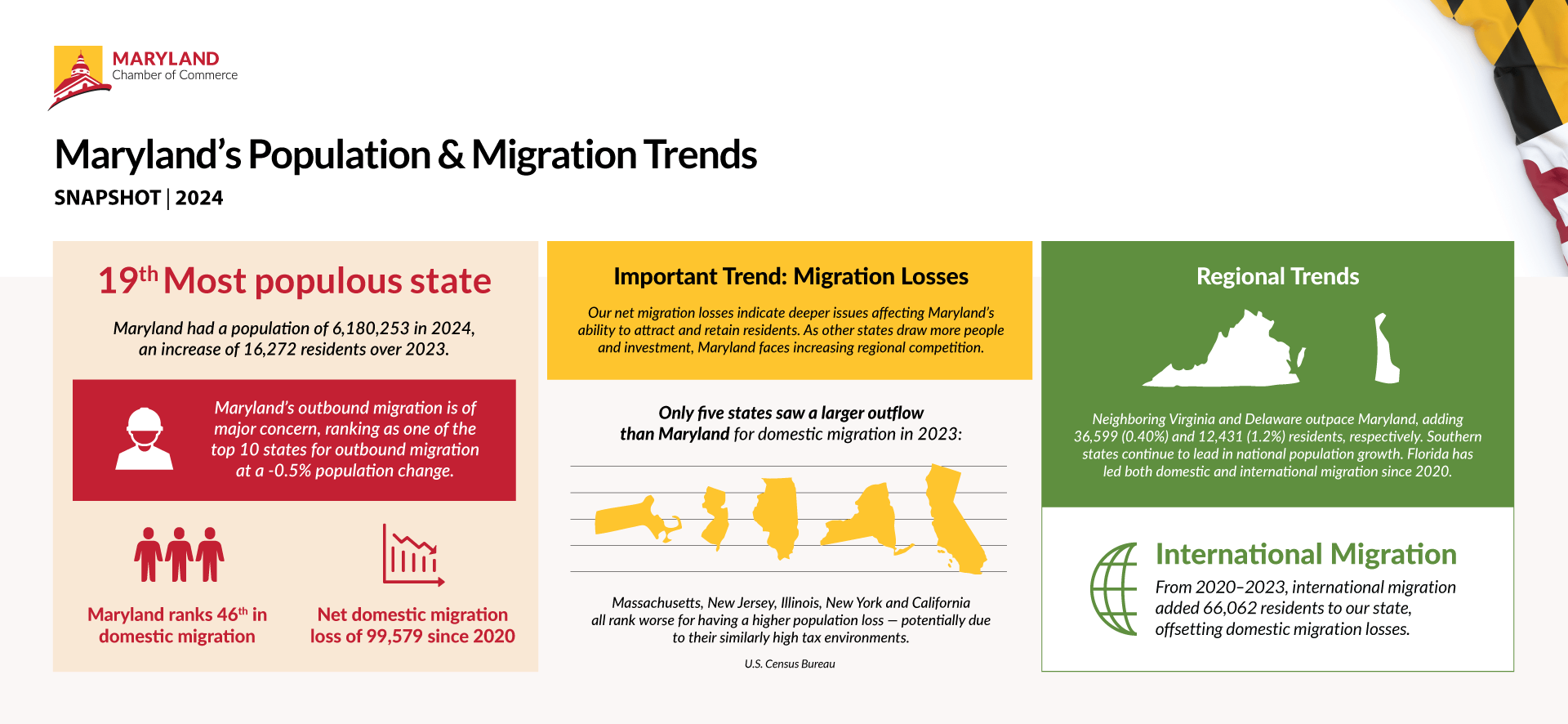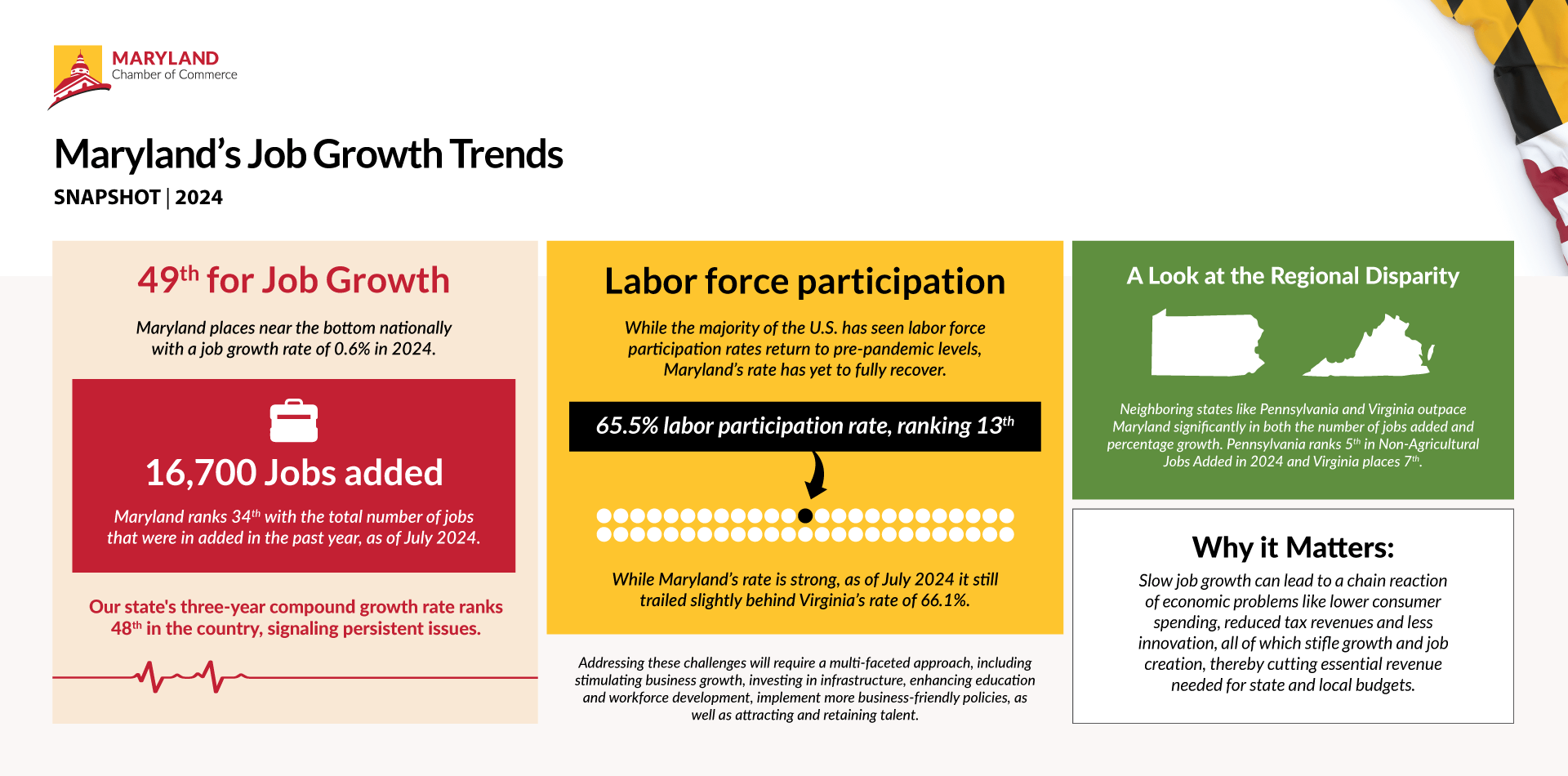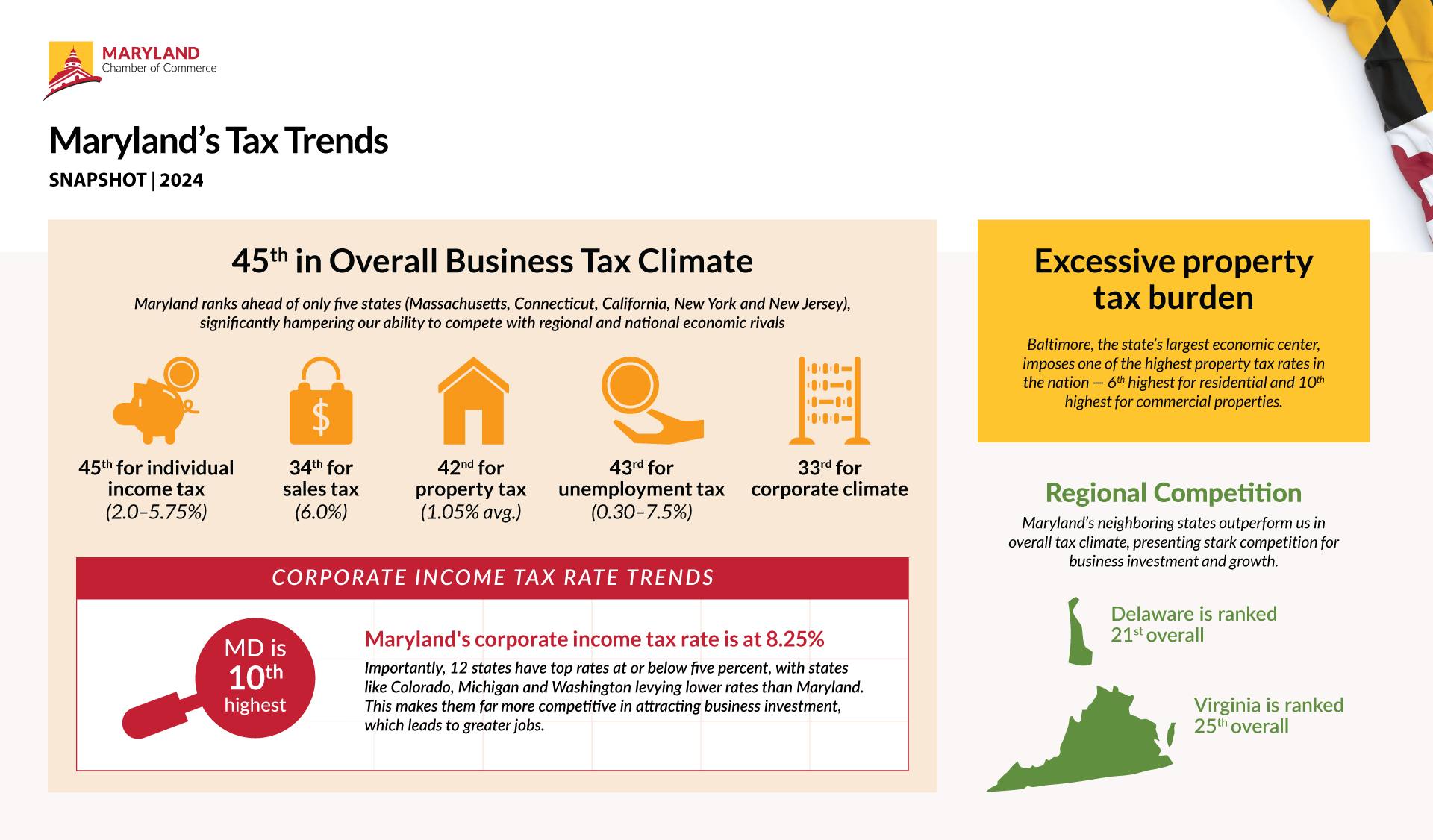
Maryland's Economic Competitiveness
Insights into Maryland's economy that allow us to better understand our strengths and opportunities
Gain valuable insights into Maryland's economic landscape through our comprehensive data-driven analyses. See where Maryland stands when it comes to key areas like population change, employment growth, wages, taxation and more. Explore our snapshots for more information on the topic at hand, the data and what it reveals.
The 2025 Competitiveness Redbook for Maryland is sponsored by:
Presenting Sponsor

Touchstone Sponsor

Advocate Sponsors
Edwards Performance Solutions
Giant Food
Johns Hopkins University
McCormick & Company
Salisbury Area Chamber of Commerce
W. L. Gore & Associates
Supporting Sponsor
Maryland Tourism Coalition


